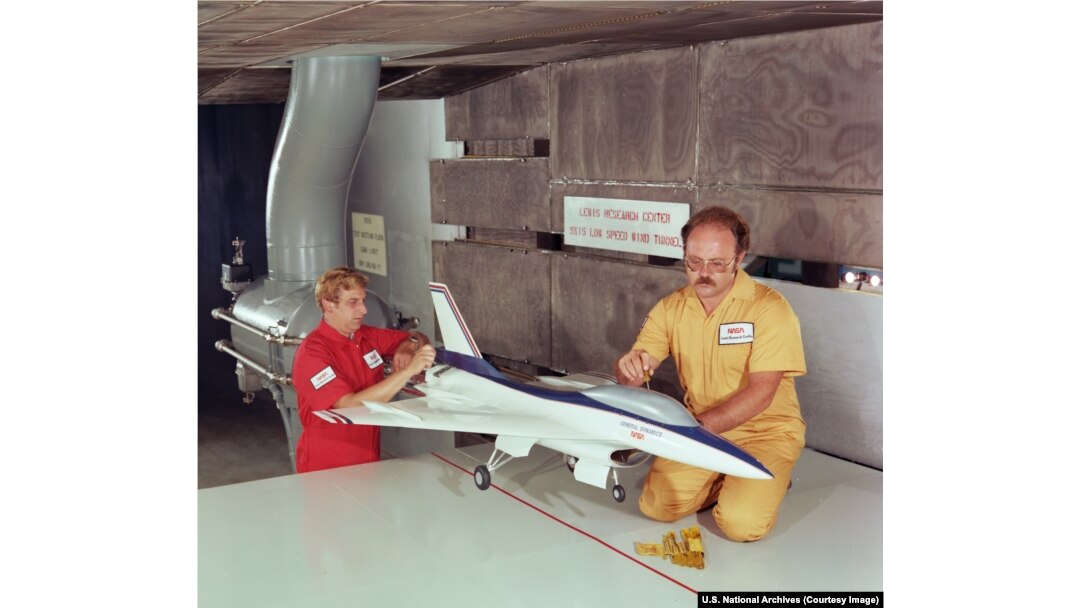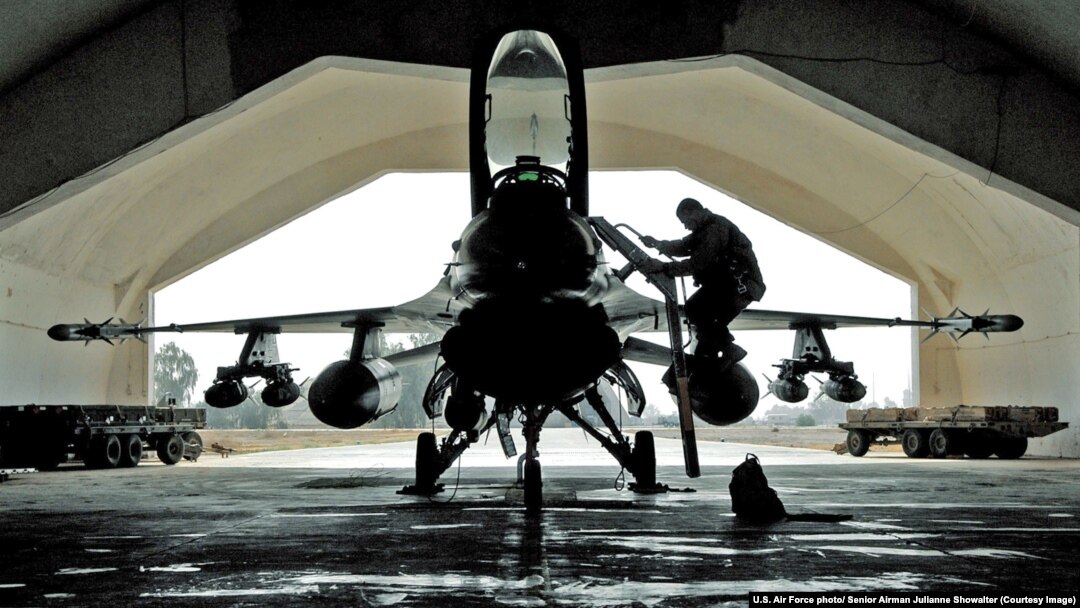As observers await the appearance of F-16s in the skies over Ukraine, Keith Rosenkranz, a pilot who flew 30 missions in the jet during the Gulf War, sounds a note of caution to the Ukrainian airmen who will fly them.
"It's one thing to go out on a training mission to drop bombs on a dummy target or engage dissimilar aircraft in an air-to-air scenario," he told RFE/RL. "It's another thing to do either of these when an enemy is trying to kill you."
After years of requests from Kyiv, Ukraine is due to receive its first F-16s from Western allies in June or July, according to recent reports.

A model of an F-16 is prepared for wind tunnel testing at a NASA facility in Ohio in August 1983.
The F-16 was created in the aftermath of the Vietnam War. In the dogfights of that conflict, bulky, slow-turning American jets were picked off in alarming numbers by more nimble Soviet-supplied aircraft.
To create the F-16, a team of designers who became known as the "fighter mafia" upended the philosophy of the time, which was resulting in large and complex American jets.
Instead of making a bigger engine to increase power, the designers of what would become the F-16 slashed the weight of the airframe. Rather than fitting the aircraft prototype with bigger fuel tanks to increase range, the design team shrunk the jet and cut down on drag.
Worried that the avionics department would stuff their jet with heavy, complex equipment, one member of the design team later recalled, "We made the airplane so dense there wasn't room for all that crap."
The result has been called the most successful fighter jet ever made. Since its prototype's first shaky flight 50 years ago, more than 4,600 F-16s have been built for the militaries of dozens of countries around the world.
An F-16 during low temperature testing inside a room in the Mckinley climatic laboratory in Florida in 1982.
Ukraine will be the latest country to field the jet, which is officially called the Fighting Falcon but generally referred to by its snappier nickname: "Viper."
Rosenkranz, who wrote a book about his combat experiences as a pilot of the F-16, says Ukrainian airmen will, at least initially, be at a disadvantage over their Russian counterparts flying advanced fighters.
As his country was being pushed to provide F-16s to Ukraine, Rosenkranz says he felt "it would be extremely difficult for Ukrainian pilots to fly combat missions in defense of their nation without a long work up in the jet."
The American pilot's own combat sorties came only after he underwent more than 1,200 hours of flight time in a training aircraft, then more than a year of noncombat service flying in the F-16. Even with this lengthy lead time, his first warfighting missions were "terrifying," he says.
"Russia has capable air-defense systems, such as the [S-400 anti-aircraft missile]. Their experienced fighter pilots would have an advantage over [Ukrainian] F-16 pilots with little time in their jets. As I said, there's a stark difference between training missions and actual combat missions."
Rosenkranz says it would take around a year of flying the F-16s before Ukrainian pilots would feel comfortable in the jet.
"Even with that, I wouldn't necessarily believe they would dominate the Russian military," he says.
F-16 and F-15 jets (distinctive for their twin tails) fly over burning oil fields in Iraq in 1991 during the Gulf War.
The F-16 was initially designed to outmaneuver and shoot down other jets, including with a rotary cannon capable of firing 100 20mm rounds per second. But with the powerful radars and missile systems in use by fourth-generation fighter aircraft today, it is unlikely the Ukrainian-piloted F-16s will face the kinds of nose-to-tail dogfights seen in previous conflicts.
David Kern is a former F-16 pilot with thousands of hours of experience flying all fourth-generation fighter jets operated by the U.S. Air Force. Kern told RFE/RL that he believes the role for the F-16s in Ukraine will be as a kind of "very flexible and long-range artillery system."
Kern, who today trains pilots in the same "fly-by-wire" flight control system used in the F-16, says the American jets will likely be used to strike airborne targets such as large Russian drones and cruise missiles, as well as ground targets such as "supply routes, logistics staging, and any Russian concentrations of force."
The pilot adds, "I would not be surprised if the Ukrainians use the F-16 to bring the fight to Russia, by making some very deep strikes into Russia to attack strategic targets."
Ground staff pull the engine out of an F-16 at Bagram Airfield in Afghanistan in 2014.
After the first batch of F-16 fighters and their contingents of pilots and ground crew arrive in the coming days or weeks, Ukraine reportedly expects a total of around 20 pilots to be trained and ready for combat missions by the end of 2024. That is far fewer than Kyiv had hoped due to a reported difficulty in finding space in training courses.
A total of 85 of the jets have been promised to Ukraine by NATO members Denmark, Norway, Belgium and the Netherlands.


